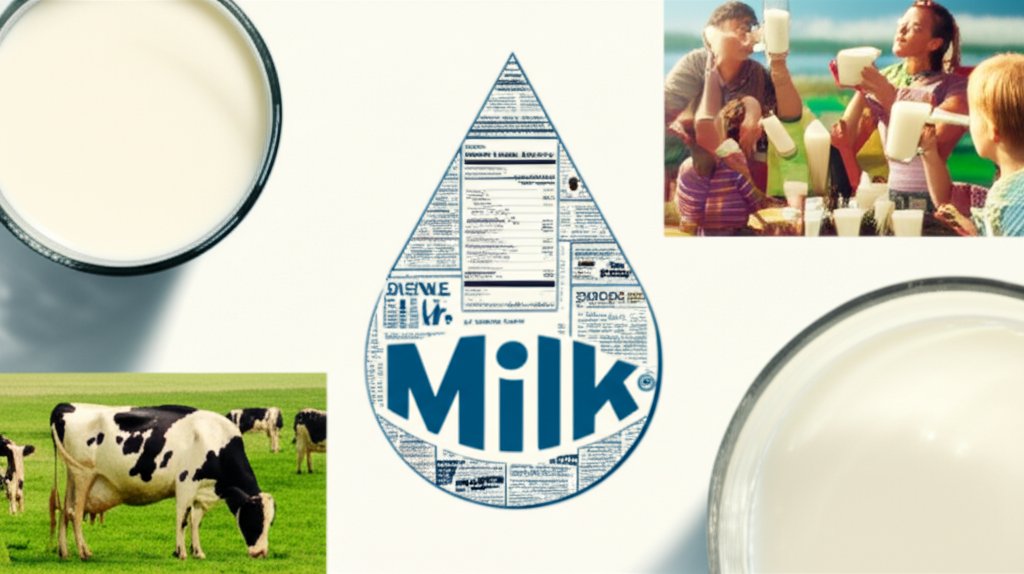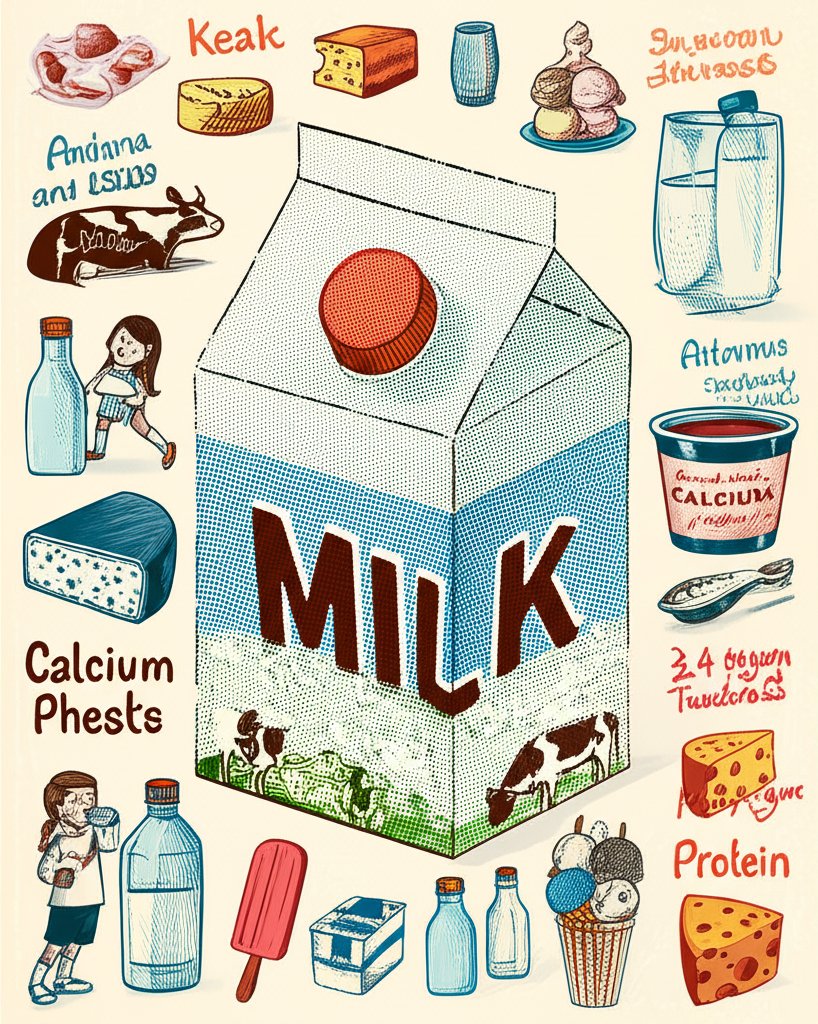Untuk gambaran yang lebih besar dan konteks penuh, pastikan Anda membaca panduan utama kami tentang Twix Fun Size Nutrition Facts: Whats in This Candy?.
Knowing the nutrition facts for all foods, including those tempting treats like a Twix Fun Size, is crucial. But what about everyday staples? Let’s delve into 1 milk nutrition facts and uncover how they play a role in your overall dietary picture. From the calcium content to the calorie count, understanding milk’s nutritional profile empowers you to make informed food choices.
At a Glance:
- Discover the specific nutrients found in 1 milk and their contributions to health.
- Compare different types of milk (whole, 2%, 1%, skim) to understand their varying fat and calorie content.
- Identify potential downsides of milk consumption and alternative options for those with specific needs or dietary restrictions.
- Learn how to incorporate milk into a balanced diet alongside treats like Twix Fun Size candies.
- Address common myths and misconceptions related to milk and its role in nutrition.
A Breakdown of 1 Milk Nutrition Facts
When discussing “1 milk,” we’re generally referring to milk with 1% milk fat. This reduced-fat option balances calorie control with essential nutrients. Let’s break down what you can expect in a typical 8-ounce (240ml) serving:
- Calories: Around 100-110 calories.
- Fat: Approximately 2.5 grams of fat.
- Saturated Fat: Roughly 1.5 grams.
- Protein: A significant 8 grams.
- Carbohydrates: Approximately 12-13 grams, primarily from lactose (milk sugar).
- Sugar: 12-13 grams (naturally occurring lactose).
- Calcium: About 300mg, or 30% of the Daily Value (DV).
- Vitamin D: Many brands fortify 1 milk with Vitamin D, typically providing 25% of the DV.
- Potassium: Around 350-380mg, or 8-10% of the DV.
It’s worth noting that these values can slightly vary depending on the brand and whether the milk is fortified with additional vitamins and minerals. Always check the specific nutrition label for the most accurate information.
Comparing Milk Types: Fat, Calories, and Nutrients
The primary difference between milk types lies in their fat content. This affects the calorie count and the presence of fat-soluble vitamins. Here’s a quick comparison:
| Milk Type | Calories (8oz) | Fat (g) | Saturated Fat (g) | Protein (g) | Calcium (% DV) |
|---|---|---|---|---|---|
| Whole Milk | 150 | 8 | 5 | 8 | 30% |
| 2% Milk | 120 | 5 | 3 | 8 | 30% |
| 1% Milk | 100-110 | 2.5 | 1.5 | 8 | 30% |
| Skim Milk | 80-90 | 0 | 0 | 8 | 30% |
| As you can see, reducing the fat content significantly lowers the calorie count while maintaining the protein and calcium levels. Whole milk offers a richer flavor and more fat-soluble vitamins (A, D, E, and K), but also packs more calories. |
The Health Benefits of 1 Milk: What You Gain
1 milk offers several important health benefits:
- Strong Bones and Teeth: Calcium is essential for bone health throughout life, and 1 milk is an excellent source. Vitamin D, often added to 1 milk, aids in calcium absorption.
- Muscle Building and Repair: The 8 grams of high-quality protein in 1 milk provide the building blocks for muscle tissue.
- Electrolyte Balance: Potassium is an important electrolyte that helps regulate blood pressure and fluid balance. 1 milk contributes to your daily potassium intake.
- Overall Nutrition: 1 milk provides a range of other vitamins and minerals, contributing to overall health and well-being.
For example, drinking a glass of 1 milk after a workout can help replenish electrolytes and provide protein for muscle recovery.
Potential Downsides and Considerations
While 1 milk offers numerous benefits, it’s essential to consider potential downsides:
- Lactose Intolerance: 1 milk contains lactose, a sugar that some people have difficulty digesting. This can lead to bloating, gas, and diarrhea. Lactose-free milk is a readily available alternative.
- Milk Allergy: A milk allergy involves an immune response to milk proteins. Symptoms can range from mild skin rashes to severe anaphylaxis. If you suspect a milk allergy, consult a doctor.
- Added Sugars in Flavored Milk: Flavored 1 milk can be high in added sugars, which can contribute to weight gain and other health problems. Opt for plain 1 milk whenever possible.
- Contamination: There are concerns about potential contamination with antibiotics or hormones. Always buy organic and non-GMO milk whenever possible.
1 Milk and a Balanced Diet: Moderation is Key
While 1 milk offers nutritional benefits, it’s crucial to integrate it into a balanced diet. Just like with treats such as those in the Twix Fun Size Nutrition Facts, moderation is key. See Twix Fun Size Details for more on that.
Here’s how to approach it:
- Consider Your Calorie Needs: If you’re watching your calorie intake, choose lower-fat milk options like 1% or skim.
- Balance with Other Food Groups: Ensure you’re also consuming plenty of fruits, vegetables, whole grains, and lean protein sources. Don’t rely solely on milk for your nutritional needs.
- Limit Added Sugars: Avoid flavored milk or add your own natural sweeteners in moderation.
- Stay Hydrated: While milk contributes to hydration, it shouldn’t be your only source of fluids. Drink plenty of water throughout the day.
Imagine you’re planning a snack. Instead of only reaching for a Twix Fun Size, pair it with a glass of 1 milk. This provides a small amount of protein and calcium to balance out the sugar and fat content of the candy.
Quick Answers: Addressing Milk Myths and Misconceptions
- Myth: Milk causes mucus production. Studies have shown no link between milk consumption and increased mucus production.
- Myth: Adults don’t need milk. Calcium and Vitamin D are crucial throughout life, and milk can be a convenient source.
- Myth: All milk is the same. Different types of milk vary significantly in fat and calorie content.
Practical Playbook: Integrating 1 Milk Into Your Daily Routine
Here’s a practical guide to incorporating 1 milk into your routine:
- Morning Routine: Add 1 milk to your cereal, oatmeal, or smoothies.
- Post-Workout Recovery: Drink a glass of 1 milk after exercise to replenish electrolytes and support muscle recovery.
- Snack Time: Pair a small serving of healthy granola with 1 milk for a nutritious snack.
- Cooking and Baking: Use 1 milk in recipes to add moisture and nutritional value.
- Before Bed: A warm glass of 1 milk before bed can be a soothing and comforting ritual.
This could look like swapping out creamer for 1 milk in your morning coffee to reduce fat intake, or choosing it as a beverage option over sugary drinks.
Making the Right Choice: A Simple Decision Tree
Here’s a simple decision tree to guide your milk choices:
- Are you lactose intolerant?
- Yes: Choose lactose-free milk or alternative milk options (almond, soy, oat, etc.).
- No: Proceed to the next question.
- Are you concerned about calorie intake?
- Yes: Choose 1% or skim milk.
- No: Proceed to the next question.
- Do you prioritize fat-soluble vitamins?
- Yes: Choose whole milk.
- No: 2% milk offers a balance of nutrients and calories.
Remember, these are just guidelines. It’s always best to consult with a registered dietitian or healthcare professional to determine the best dietary choices for your individual needs.
Informed Choices for Your Well-being
Understanding 1 milk nutrition facts enables smarter food choices, especially when balancing treats against nutritious staples. By considering fat content, potential downsides, and creative ways to incorporate it into your diet, you can leverage the health benefits of 1 milk without compromising your overall dietary goals.

- Bento Box Glass Offers Practical, Eco-Friendly Meal Storage - December 16, 2025
- The Best Bento Box Price For Your Perfect Packed Lunch - December 15, 2025
- Bento Box Shopping Tips for Smart and Stylish Lunch Prep - December 14, 2025










